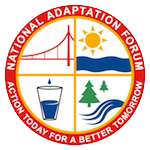Tools Salon
Wednesday, September 7 • 8:00 am-5:00 pm
Renaissance Hotel | Dawson Room, 3rd Floor
Renaissance Hotel | Dawson Room, 3rd Floor
At this interactive open house, you can experiment with new climate-change tools in a hands-on setting, evaluate how those tools can apply to real-life scenarios, and meet and collaborate with tool creators and your peers. Check out the tools salon during concurrent sessions or networking breaks.
Statewide: climate.calcommons.org/aux/BCM_WS_graph and high-res SF Bay: climate.calcommons.org/tbc3/sf-bay-watershed-analyst
Climate change affects all aspects of fisheries, including fish production, fish habitats and fishing-dependent communities. The Climate Adaptation Toolkit for Fisheries Management includes information on climate and fisheries data, tools and recommended priorities to enhance climate-smart fisheries management in an easy-to-use portal. Housed on CAKE, this toolkit leverages the existing database infrastructure, search and mapping functionality, and content to build customized portals for fishery managers. The final toolkit will be released in fall 2016. cakex.org/dashboard/fisheries-toolkit
This event was hosted by the Local Government Commission.
The California Adaptation Forum is an affiliate forum of the National Adaptation Forum
